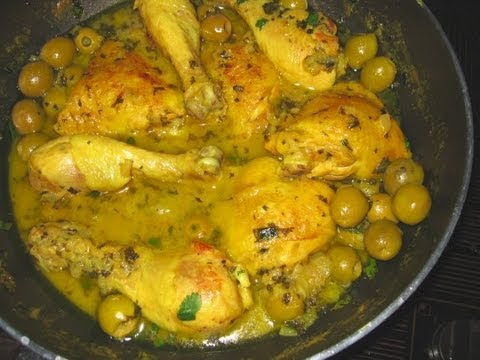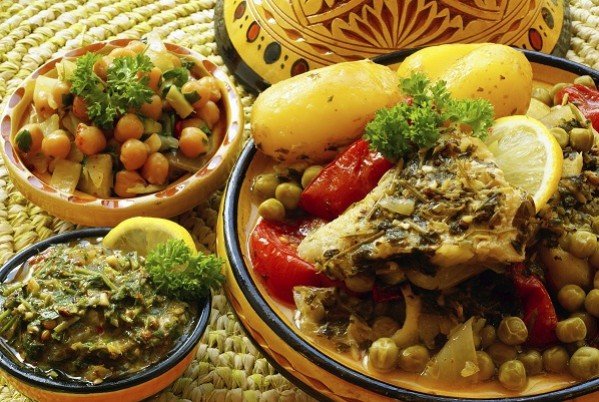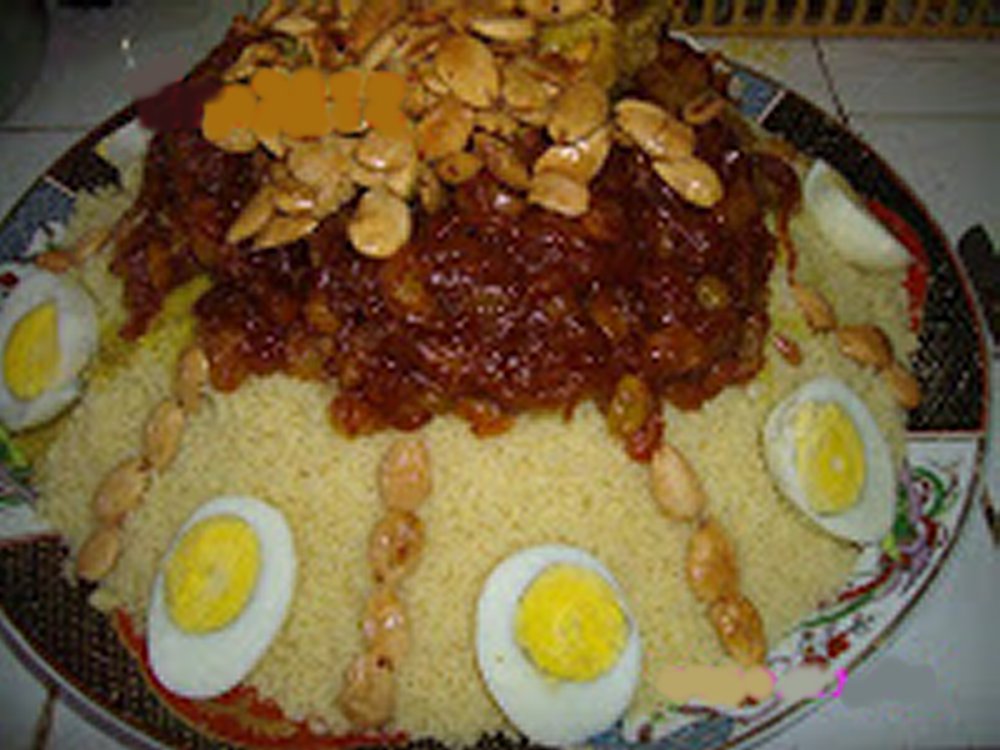Moroccan cuisine has long been one of the most diverse cuisine in the world. This is due to Morocco's interaction with the outside world for centuries. Moroccan cuisine is a mix of Amazigh, Arab, Maghreb, Middle Eastern, Mediterranean and African cuisine. Chefs in Moroccan cuisine over the centuries in Fez, Meknes, Marrakech, Rabat and Tetouan have created the basis for what is known as Moroccan cuisine today, Moroccan cuisine is the first Arab and African, and the second is the world after France.
Influence and history
Dish, seasoning and olive oil in a restaurant overlooking the Oudan Dam.
Morocco as a springboard and a meeting place for many civilizations, its kitchen was influenced by the original Amazigh cuisine as well as the Andalusian Arab kitchens; the kitchens carried by the Maurice when they left Spain and the Ottoman and Middle Eastern Turkish cuisine and kitchens brought by the Arabs
Translates the history of Morocco into his kitchen. The refugees fleeing the Abbasids left Baghdad in the Middle Ages and settled in Morocco, bringing with them the traditional recipes that have become commonplace in Morocco forgotten in the Middle East. This is proved by Baghdadi in his works (12th century AD) about Iraqi recipes and similarities with contemporary Moroccan dishes. The distinguishing feature is fruit cooking with meat such as quince with lamb or apricot with chicken. As well as the influences on Moroccan cuisine that came with Maurice (Muslim refugees) who were expelled from Spain during the Spanish Inquisition.
Ingredients
Morocco produces a large variety of Mediterranean fruits and vegetables and even some tropical. The country produces large amounts of sheep, poultry, livestock and fish that form the base of the kitchen.
Use spices
Spices in the central market in Agadir
Spices are widely used in Moroccan cuisine. The import of spices to Morocco began thousands of years ago, and many elements, such as saffron of Taliouin, mint and olives from Meknes, and orange and lemon from Fez, local products. Spices include cinnamon, cumin, ginger, black pepper, anise seeds, sesame seeds, coriander, thyme, celery, saffron, Bildy (saffron) and mint.
Structure of meals
Lunch is the main meal, except for the holy month of Ramadan. The formal way of serving the meal begins with a series of hot and cold authorities, followed by the Tajin. Eat bread with each meal. Often the next dish is lamb meat or chicken, followed by couscous with meat and vegetables. Then the end of the meal serves a cup of tea with common mint in Morocco. It is common for Moroccans to use three fingers of their hands to eat, and to use bread.
Main dishes
Moroccan couscous in Fez
List of dishes in Morocco
The main meal among the people is the couscous, which is very old and was invented by the Amazigh. Chicken is the most common type of meat eaten in Morocco. The most common red meat in Morocco is beef and then lamb. The sheep in North Africa have a lot of fat concentrated in the tail, which means that the Moroccan lamb does not have the acute flavor, which is usually in Western sheep and give it an undesirable taste.
The most famous Moroccan Amazigh dishes are couscous, Bastille, Marouzia, Tagayn, Tangerine, Zallouq, Bisara, Harsheh, Malawai, Baghreer and Hreira. Although the latter is a soup, it is considered a complete meal and is usually served with dates during the month of Ramadan.
Candy
Moroccan Sweets Menu
Moroccan sweets are not necessarily offered at the end of a meal. The dessert group is a deer heel ("horns of deer"), a pastry stuffed with almond paste and sugar. Another dessert is the honey buns, which is a piece of fried dough and immersed in a vase of honey with sesame seeds. Chocolates are sweets eaten during the month of Ramadan. Coke candy is a coconut cake, briyat, crunchle, graiaba, hamburger, slaw and squash.
Drinks
Tea Culture (Morocco)
The most popular drink is mint green tea. Traditionally, the preparation of mint tea in Morocco is considered a form of art and drinking with friends and family members is one of the most important rituals of the day. The method of pouring tea is as important as its quality. Tea is combined with cones or sugar cubes.
Moroccan fast food
The sale of traditional fast food on the street is commonplace for a long time, and the best example of this is Djemaa el Fna Square in Marrakech. Beginning in the 1980s, new restaurants began offering "bocadillo" (a Spanish word for Shatira, widely used in Morocco). The bocadillo is baguette baguette stuffed with salad and one of the types of meat, or similar tortilla, which is also a term widely used in Morocco.
During the 1990s, a new trend began to emerge. Dairy shops and new products (Mahlibah in Arabic Moroccan), which spread throughout the cities in Morocco. They generally offer all kinds of dairy products, juices and breakfast, as well as bocadillos, where they compete heavily with restaurants that have been around for years.
In the late 1990s, the country also saw the opening of multinational fast-food chains, especially in major cities such as McDonald's.


Congratulations @hamzael36! You have completed some achievement on Steemit and have been rewarded with new badge(s) :
Click on any badge to view your own Board of Honor on SteemitBoard.
For more information about SteemitBoard, click here
If you no longer want to receive notifications, reply to this comment with the word
STOPDownvoting a post can decrease pending rewards and make it less visible. Common reasons:
Submit
Congratulations @hamzael36! You have completed some achievement on Steemit and have been rewarded with new badge(s) :
Click on any badge to view your own Board of Honor on SteemitBoard.
For more information about SteemitBoard, click here
If you no longer want to receive notifications, reply to this comment with the word
STOPDownvoting a post can decrease pending rewards and make it less visible. Common reasons:
Submit